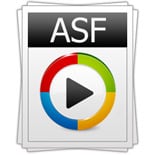Advanced Streaming Format (ASF) was developed as a proprietary streaming format by Microsoft in the late ’90s. Initially integrated with Microsoft NetShow, it provided a way to stream multimedia files over networks. While it had its heyday in an era before ubiquitous broadband, its legacy has been mostly overshadowed by more efficient, open-source alternatives. This article delves into what ASF was, its significance, and how modern technologies have replaced it.
What is Advanced Streaming Format (ASF)
ASF stands for Advanced Streaming Format, which is a method of streaming data supported by Microsoft NetShow. Advanced Streaming Format (ASF) supports video, audio, images, URLs, and scripts. ASF streams can combine different types of data, allowing you to stream presentations involving slides and audio narration.

Use in Microsoft NetShow
ASF was a cornerstone of Microsoft NetShow, a multimedia streaming software. Together, they provided a complete solution for both content creators and consumers looking to distribute and access media over a network.
Using the NetShow Real-Time Encoder, you could generate live ASF streams that contain audio and video. You could also use tools provided by NetShow to create and store ASF files that you can later stream. NetShow could deliver ASF streams using either multicasting or unicasting.
ASF Format: From Proprietary to Forgotten
A Closed Ecosystem
In its prime, the ASF Format was entrenched in a closed Microsoft ecosystem. It served as a proprietary counterpart to other open standards, locking users into Microsoft’s multimedia environment. Being a proprietary format, it had limitations in terms of universal compatibility and adoption.
Flexibility at a Cost
While ASF was flexible and allowed for different types of multimedia like text, script command, and more, this flexibility came at a cost. The format could be overly complex for simple streaming needs, and without wide-ranging industry support, its use remained largely restricted to Microsoft services.
Codec Independence
One of the notable features of ASF was its codec independence. This meant that the format could use different codecs for audio and video streams, which provided some level of customization. However, this feature was eventually overshadowed by the rise of more efficient, open-source formats that offered similar or better functionality.
Modern Alternatives to ASF
HTML5 Video Formats
The advent of HTML5 has revolutionized how we stream content today. Formats like MP4, WebM, and Ogg are now the norm, providing more efficient compression and broader compatibility.
Adaptive Bitrate Streaming
Technologies like HLS (HTTP Live Streaming) and DASH (Dynamic Adaptive Streaming over HTTP) have surpassed ASF’s capabilities, offering adaptive bitrate streaming that adjusts video quality on-the-fly according to network conditions.
Conclusion: The Legacy of ASF
While Advanced Streaming Format (ASF) played an essential role in the early days of internet multimedia, it has been largely replaced by more modern, open-source, and efficient formats. However, understanding its role can offer valuable insights into the evolution of streaming technologies.
